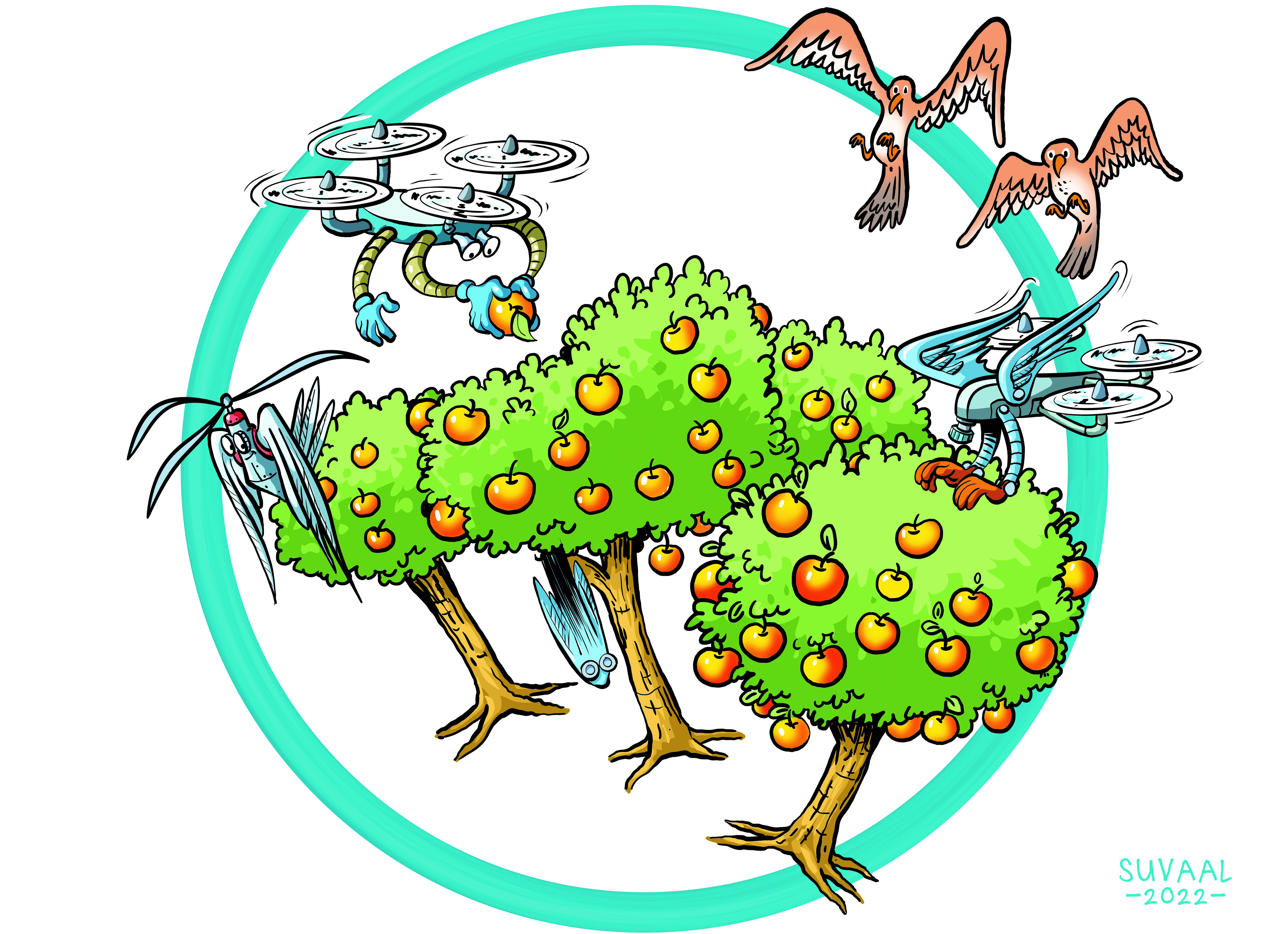Biomorphic Intelligence Lab
Research Themes: Software Technology & Intellligent Systems, robotics


A TRL is a measure to indicate the matureness of a developing technology. When an innovative idea is discovered it is often not directly suitable for application. Usually such novel idea is subjected to further experimentation, testing and prototyping before it can be implemented. The image below shows how to read TRL’s to categorise the innovative ideas.
Summary of the project
At the Biomorphic Intelligence Lab the researchers are trying to develop a new type of flying robot that can think and interact with its environment. Classical drone designs often present a quadcopter configuration and are equipped with RGB cameras in order to perform all sorts of mapping, visual inspections or searching tasks. Adding more sensors and actuators on the drones will enable interaction with its environment and open the scene to new applications in the real world. This comes at a cost though, as more processing power and more hardware will make the design bigger and, as a consequence, drain the battery faster.
The researchers aim to enhance robustness and efficiency challenges for interacting drones, using bioinspired solutions for both the body and the brain. Via an out-of-the-box design approach researchers are reshaping flying robots incorporating new features through embodied intelligence, such as the sense of touch or the ability to grasp objects. Function follows form, as such new neuromorphic AI techniques are developed to enable real time control of these novel biomorphic drones. Another form of intelligence, body intelligence, will be developed in parallel to endow drones with more degrees of freedom and interaction capabilities through advanced manipulation skills.
What's next?
For the researchers at AE the next step is to bring the new morphologies to life. Where the shape of the body of the robot determines its function, the control of this shape is the next challenge. How can all this new sensory data be processed in real time and efficiently, and how can decisions be made autonomously based on this diverse set of information?
With or Into AI?
Both
Dr. Salua Hamaza
Dr Nergis Tomen
Faculties involved
- AE
- EEMCS
